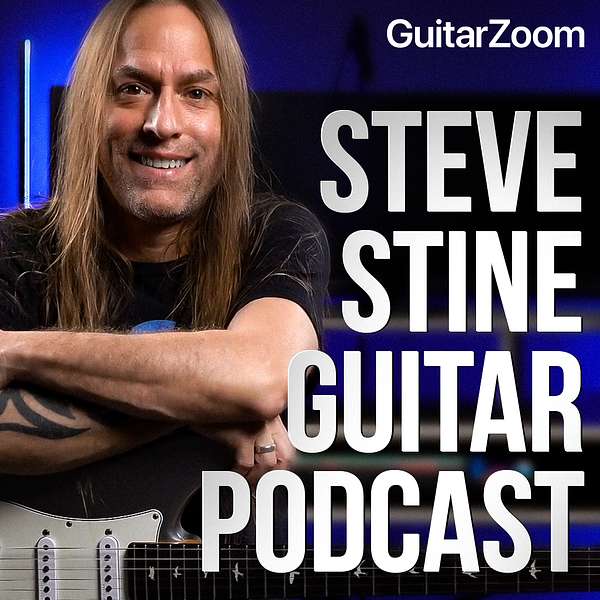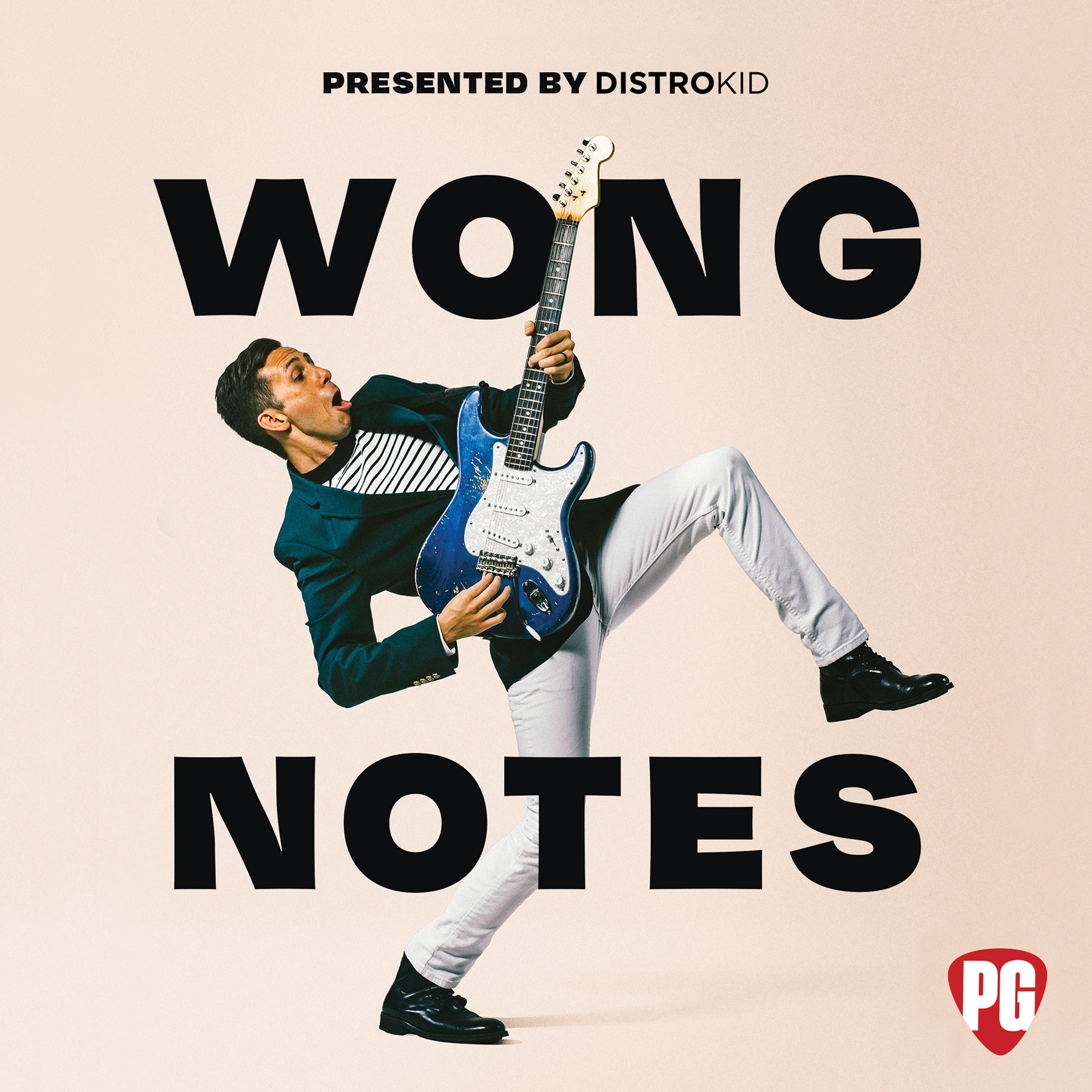
Steve Stine Guitar Podcast
If you are passionate about playing the guitar, but often find yourself short on practice time, or frequently on-the-go and in need of musical inspiration, then the Steve Stine Guitar Podcast can help you improve your skills and stay motivated. Join Steve Stine as he chats with fellow musicians and educators, and shares valuable guitar lessons to help you learn new songs, grasp music theory, and create your own solos. Whether you are an experienced guitarist or just starting out, this podcast is perfect for you.
Steve Stine Guitar Podcast
Boost Your Guitar Solo Confidence with These 5 Proven Techniques
Hey, everyone! Welcome to the Steve Stine Podcast. I'm your host Steve Stine, and today we're diving into five essential tips to improve your soloing skills on the guitar. We'll explore how to enhance your guitar tone for maximum comfort and confidence. We'll discuss making smooth connections across the fretboard, adding those little details—what I call "isms"—that bring authenticity to your playing.
You'll also learn about giving your solos direction through chord connections and phrasing. Whether you're a beginner or have been playing for years, these tips are designed to help you elevate your guitar solos and make them sound more fluid and expressive. So grab your guitar, and let's get started on this musical journey together!
Links:
Check out the GuitarZoom Academy:
https://academy.guitarzoom.com/
- Steve’s Channel → https://www.youtube.com/user/stinemus...
- GuitarZoom Channel → https://www.youtube.com/user/guitarz0...
- Songs Channel → https://www.youtube.com/user/GuitarSo... .
Steve [00:00:00]:
Today we're going to be talking about five things. that I think could help you in making your guitar solos sound. and feel a little more authentic. All right, so the first thing we're going to do is we're going to talk about guitar tone. This starts with the guitar, the pickups, the strings going into the amp. And then ultimately, some sort of effects that you might have. Now, I'm not telling you that you need to go buy a bunch of stuff.
Steve [00:00:22]:
That's not what I'm saying at all. But I am saying, when I was younger, I didn't really understand anything about tone and comfort, which is the most important thing. And so I just played what I had right. And if the opportunity came up to get a different amp or whatever. It might be even something as simple as different strings. That feel more comfortable to you. All of these things can make a real big difference. On your confidence level.
Steve [00:00:45]:
And the way things feel and sound. When you go to execute certain things on the fretboard. And it takes time to figure that out. This could be a conversation that we could talk about for an hour. And maybe we will someday. But it really does make a difference. So I always think, like, if I wanted to play, for instance, something. And I've got some distortion.
Steve [00:01:08]:
What I want to do is I want to build a bit of a comfort zone. Around the things that I'm going to be doing. So when I go to play, it feels good, the strings feel good, the neck feels good. And I do have a little bit of delay and reverb around me. Just to kind of give a bit of a comfort zone around me. A blanket, if you will, as I'm playing. So that's what I'm looking for. I don't need way too much distortion, but I need enough distortion.
Steve [00:01:52]:
I want the distortion to feel good to me. And so, as you continue playing, start thinking about that. Like, what do you need to do to build something that feels really good? When you grab your guitar, it's very motivating for you. And, again, adds that level of comfort. And kind of gives you a blanket around what you're doing. So when you're playing, you don't always feel like you have to pick so hard. Or play so fast or whatever it might be. Okay.
Steve [00:02:23]:
You create something that feels good to you. Now, the second thing we're gonna do. Is talk about smooth connections across the fretboard. So, again, whatever scale you might be working on. Or positions that you're working on. Or whatever it might be, what you want to do is start developing an ability of being able to execute certain motions on your fretboard that feel and sound comfortable. So, for instance, if I was gonna move from one string to another string, if I was gonna. I'm just playing an a minor now.
Steve [00:02:50]:
But if I wanted to play from the second string and I wanted to move to the first string, to the third string, for instance, it doesn't matter what it is that I'm doing. You know, you can play anything you want. But the most important thing is, when you're playing, you're able to play from note to note on a string in however you know you want to. But make it feel and sound smooth, whether it's, you know, staccato or more legato sounding and then connecting to another string. And think about that when you're playing, you know, a lick or a pattern or something like that. Maybe something you've learned. And you try to connect it together across those strings or across the fretboard or whatever, you want to keep trying to figure out how to make that sound as smooth as possible. Certainly when you add in distortion into the mix, because it can get quite noisy.
Steve [00:04:04]:
So no matter what it is that you're trying to play, finding a way of being able to make those motions sound smooth when you play. And sometimes you really gotta concentrate on just the smallest things. You might just be playing, you know, just a couple of notes. And try and figure out how to make that sound as smooth as you can when you play. That leads into the third thing, which is what I'm just going to call isms. And basically what this is, are little things that you can do that make everything that you're playing sound a little more authentic. So we've got these absolutes, this scale, and these frets that we're playing, right, these notes that we're playing. And what we want to do is we want to start learning how to manipulate those a little bit so they sound a little more interesting.
Steve [00:05:11]:
With what we'll call isms, for instance, simple ideas of being able to do some sliding. Maybe you start a phrase with a slide, or you end a phrase with a slide. Or you slide in between a couple of notes to make it sound more interesting. Some more isms that you could do would be things like hammer ons or pull offs. You don't have to use all of these all of the time, but they do sound different than just picking everything. Okay, which leads into another one, which is palm muting. Like, I use a lot of palm muting when I'm playing. Where I might do a phrase and I start adding in palmuting to make it sound a little bit more percussive.
Steve [00:06:24]:
Maybe add that in on the lower side again, whatever works for you, it doesn't make any difference. And then I would say the other last two things would be bending and vibrato. So I love being able to do a variety of different bends, be it whole step bends or half step bends, you know, or whatever, blues bands, and then, of course, your vibrato. So these are all things that you can add in at different moments in time that just make everything sound more vocal when you're playing, as opposed to just playing a scale, you start thinking about how you could move in to help you execute ideas. And it just adds this different level of dynamics, which really sounds nice, at least in my ears, where you can do different kinds of things to get different kinds of sounds. Okay. And then the last thing is, is giving your soloing direction, which we'll call chord connections. And I'm going to add phrasing in here as well.
Steve [00:07:58]:
So chord connection is basically, if you're playing over a particular chord, what are some ways that you could try and connect to that chord? So, for instance, if it was an a minor chord, really any of the notes that I'm playing right now would be notes that I could try and connect to or target or move my. My motion of playing toward. So if I was looking at the, say, minor seven chord and I was playing that note right, there is part of this chord, or if I went, that note is part of this chord. Now, you might know your theory and know which notes you're talking about, and you might not. And that's okay either way. But I'm just saying that something to think about a little bit versus just playing everything all the time, you start really trying to think about targeting or motioning yourself toward, oh, here comes a minor, here comes g. Right. And here comes f, for instance, back to g, back to a minor.
Steve [00:09:13]:
You know, there's lots of different ways that you can approach that, but learning how to direct your solos towards something, giving it a purpose, and I'll just add into this as well, because it's really important, is think about phrasing. And for me, phrasing is kind of like when you're talking or you're writing, you know, a story or something, you want the sentences to be different lengths. You want the sentences to end with different things. Everything doesn't end with a period. Sometimes there's a comma or an exclamation mark. Or whatever. It might be very much the same sort of thing here. When you're playing, you might take a longer phrase and then follow that up with something a little bit shorter, and then maybe it might be even just one or two notes, and then you need something a little bit longer.
Steve [00:10:07]:
Follow that up again, something shorter again and again. If you think about the dynamics and all those things, you can add all of these in at various times to really make things sing. Ultimately, the best way to practice all these things is just grab a simple backing track off YouTube or whatever it might be. Certainly we have them@guitarzoom.com. as well, you know, not something that's really involved, but something that's just, you know, a minor chord all the way through, or a minor to g or something like that. And just start getting used to being able to move back and forth between here comes a minor again. Here comes g, back to a minor, back to g, back to a minor, back to g. And you could just practice different little things like that just to start developing the ideas.







